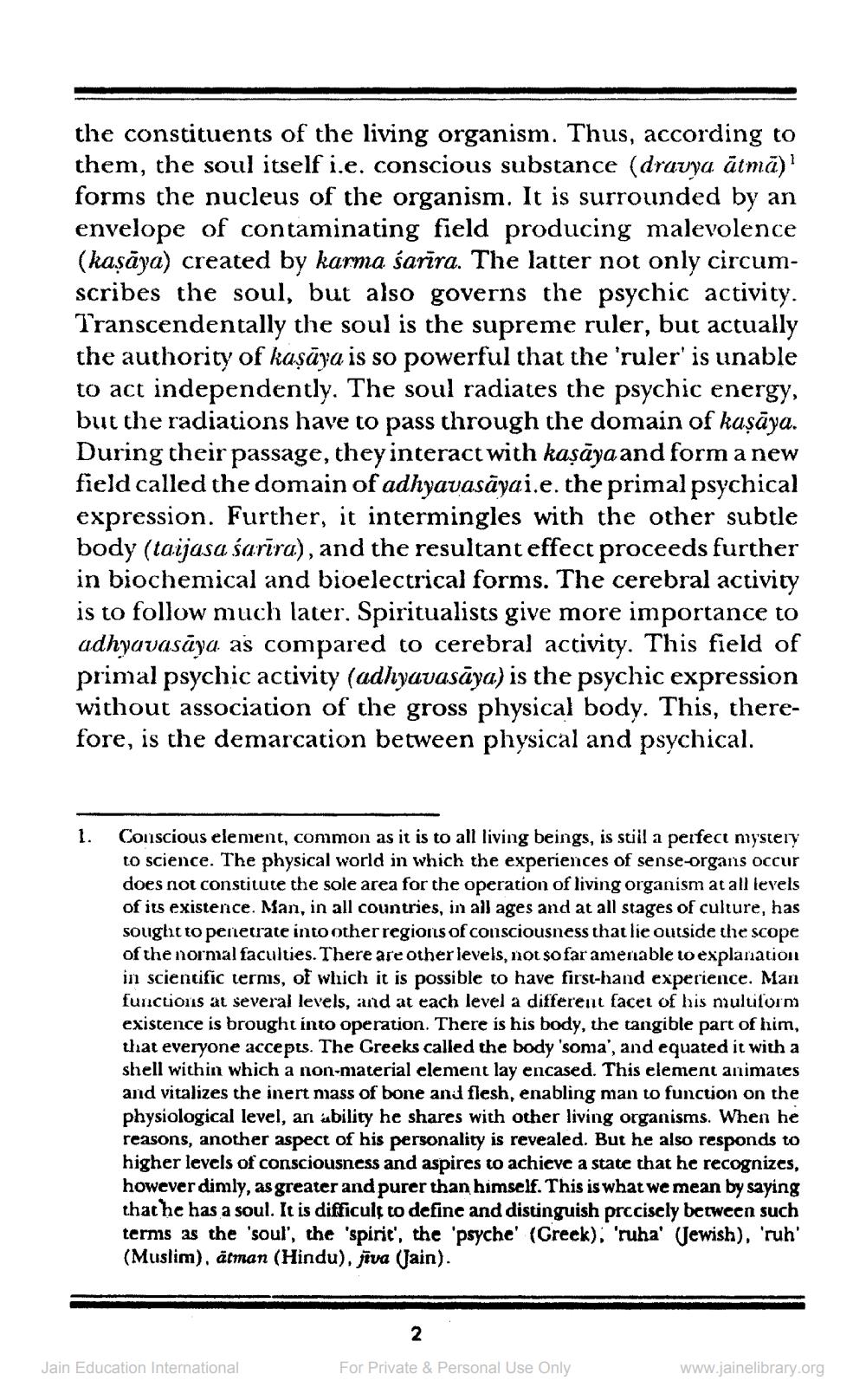________________
the constituents of the living organism. Thus, according to them, the soul itself i.e. conscious substance (dravya ātmā)1 forms the nucleus of the organism. It is surrounded by an envelope of contaminating field producing malevolence (kaṣāya) created by karma śarīra. The latter not only circumscribes the soul, but also governs the psychic activity. Transcendentally the soul is the supreme ruler, but actually the authority of kaṣāya is so powerful that the 'ruler' is unable to act independently. The soul radiates the psychic energy, but the radiations have to pass through the domain of kaṣāya. During their passage, they interact with kaṣāya and form a new field called the domain of adhyavasayai.e. the primal psychical expression. Further, it intermingles with the other subtle body (taijasa śarīra), and the resultant effect proceeds further in biochemical and bioelectrical forms. The cerebral activity is to follow much later. Spiritualists give more importance to adhyavasaya as compared to cerebral activity. This field of primal psychic activity (adhyavasaya) is the psychic expression without association of the gross physical body. This, therefore, is the demarcation between physical and psychical.
1.
Conscious element, common as it is to all living beings, is still a perfect mystery to science. The physical world in which the experiences of sense-organs occur does not constitute the sole area for the operation of living organism at all levels of its existence. Man, in all countries, in all ages and at all stages of culture, has sought to penetrate into other regions of consciousness that lie outside the scope of the normal faculties. There are other levels, not so far amenable to explanation in scientific terms, of which it is possible to have first-hand experience. Man functions at several levels, and at each level a different facet of his multiform existence is brought into operation. There is his body, the tangible part of him, that everyone accepts. The Greeks called the body 'soma', and equated it with a shell within which a non-material element lay encased. This element animates and vitalizes the inert mass of bone and flesh, enabling man to function on the physiological level, an ability he shares with other living organisms. When he reasons, another aspect of his personality is revealed. But he also responds to higher levels of consciousness and aspires to achieve a state that he recognizes, however dimly, as greater and purer than himself. This is what we mean by saying that he has a soul. It is difficult to define and distinguish precisely between such terms as the 'soul', the 'spirit', the 'psyche' (Greek); 'ruha' (Jewish), 'ruh' (Muslim), ätman (Hindu), jiva (Jain).
Jain Education International
2
For Private & Personal Use Only
www.jainelibrary.org




